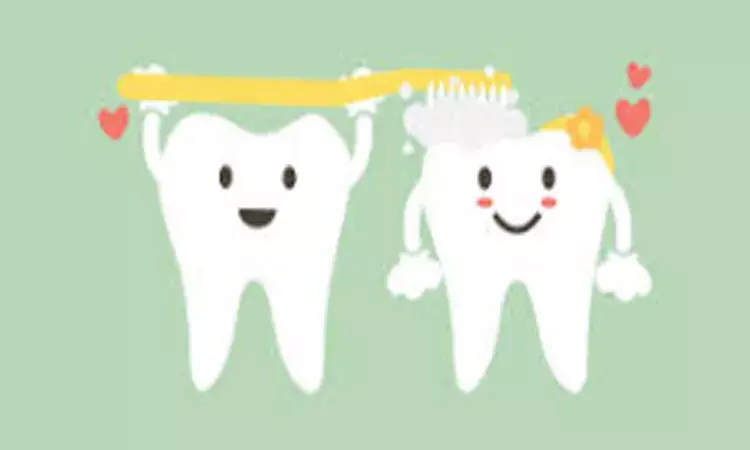- Home
- Medical news & Guidelines
- Anesthesiology
- Cardiology and CTVS
- Critical Care
- Dentistry
- Dermatology
- Diabetes and Endocrinology
- ENT
- Gastroenterology
- Medicine
- Nephrology
- Neurology
- Obstretics-Gynaecology
- Oncology
- Ophthalmology
- Orthopaedics
- Pediatrics-Neonatology
- Psychiatry
- Pulmonology
- Radiology
- Surgery
- Urology
- Laboratory Medicine
- Diet
- Nursing
- Paramedical
- Physiotherapy
- Health news
- Fact Check
- Bone Health Fact Check
- Brain Health Fact Check
- Cancer Related Fact Check
- Child Care Fact Check
- Dental and oral health fact check
- Diabetes and metabolic health fact check
- Diet and Nutrition Fact Check
- Eye and ENT Care Fact Check
- Fitness fact check
- Gut health fact check
- Heart health fact check
- Kidney health fact check
- Medical education fact check
- Men's health fact check
- Respiratory fact check
- Skin and hair care fact check
- Vaccine and Immunization fact check
- Women's health fact check
- AYUSH
- State News
- Andaman and Nicobar Islands
- Andhra Pradesh
- Arunachal Pradesh
- Assam
- Bihar
- Chandigarh
- Chattisgarh
- Dadra and Nagar Haveli
- Daman and Diu
- Delhi
- Goa
- Gujarat
- Haryana
- Himachal Pradesh
- Jammu & Kashmir
- Jharkhand
- Karnataka
- Kerala
- Ladakh
- Lakshadweep
- Madhya Pradesh
- Maharashtra
- Manipur
- Meghalaya
- Mizoram
- Nagaland
- Odisha
- Puducherry
- Punjab
- Rajasthan
- Sikkim
- Tamil Nadu
- Telangana
- Tripura
- Uttar Pradesh
- Uttrakhand
- West Bengal
- Medical Education
- Industry
Rotary toothbrush may lead to tooth surface abrasion, Finds study

According to recent research, it has been observed that rotary/oscillatory toothbrush caused the highest tooth surface abrasion when compared with other electronic toothbrushes.
The study is published in the Journal of Indian Society of Periodontology.
Adequate plaque control facilitates good gingival and periodontal health, prevents tooth decay, and preserves oral health. Toothbrushing is the primary method of removing plaque and can be classified into powered and manual toothbrushes.
Therefore, Tejinder Pal Singh and associates from the Department of Periodontology and Oral Implantology, MN Dav Dental College, Solan, Himachal Pradesh, India conducted the present study to compare the abrasiveness and surface roughness caused by four different power-driven toothbrushes with a different mode of action, on tooth surfaces in vitro.
The authors carried out an in vitro experiment that included a total of eighty freshly extracted tooth specimens which were equally divided into four groups. Each group was brushed with the specifically assigned electric toothbrush to that group, but keeping parameters such as force applied during brushing, storage of tooth before and after brushing, and toothbrushing time same. A total of the 2-month study was done on each tooth specimen.
Tooth surface roughness was recorded before and after the toothbrushing experiment to check the difference between surface roughness readings. Scanning electron microscopic (SEM) analysis was done afterward to analyse the surface topography of each group specimens. The Paired t-test used for intergroup analysis and intragroup analysis was done using Kruskal–Wallis test were the statistical analysis used.
It was then found out that after comparing the baseline and final readings of each group, the mean difference between values is highly significant in Group 1 (rotary/oscillatory). Also, the mean rank of Group 1 was least in all four groups, which showed the highest tooth surface abrasion in that group.
Moreover, the SEM analysis also revealed that Group 1 tooth specimens had deeper scratches/lines comparatively to other groups.
Hence, the authors brought to conclusion that "rotary/oscillatory toothbrush caused the highest tooth surface abrasion when compared with other electronic toothbrushes."
Dr. Nandita Mohan is a practicing pediatric dentist with more than 5 years of clinical work experience. Along with this, she is equally interested in keeping herself up to date about the latest developments in the field of medicine and dentistry which is the driving force for her to be in association with Medical Dialogues. She also has her name attached with many publications; both national and international. She has pursued her BDS from Rajiv Gandhi University of Health Sciences, Bangalore and later went to enter her dream specialty (MDS) in the Department of Pedodontics and Preventive Dentistry from Pt. B.D. Sharma University of Health Sciences. Through all the years of experience, her core interest in learning something new has never stopped. She can be contacted at editorial@medicaldialogues.in. Contact no. 011-43720751
Dr Kamal Kant Kohli-MBBS, DTCD- a chest specialist with more than 30 years of practice and a flair for writing clinical articles, Dr Kamal Kant Kohli joined Medical Dialogues as a Chief Editor of Medical News. Besides writing articles, as an editor, he proofreads and verifies all the medical content published on Medical Dialogues including those coming from journals, studies,medical conferences,guidelines etc. Email: drkohli@medicaldialogues.in. Contact no. 011-43720751


